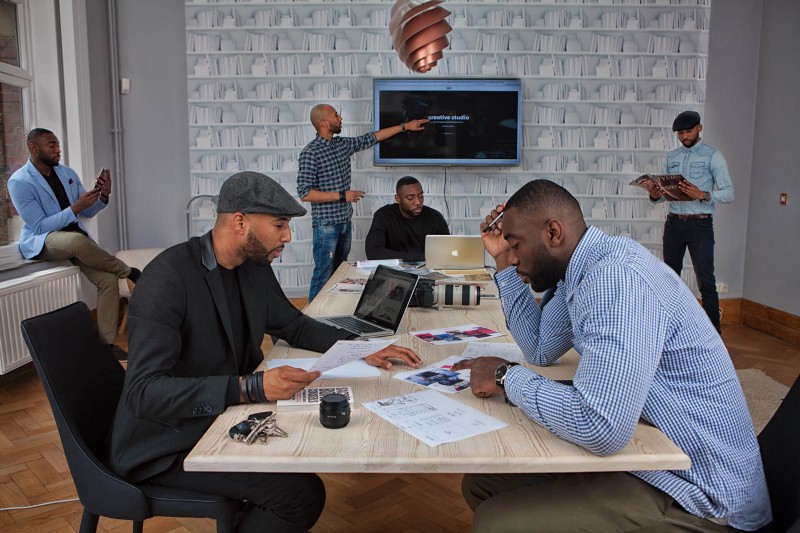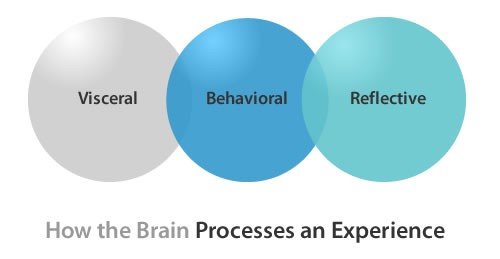Emotional design
Crafting good experience is like telling good story…
Emotional design is an important element when generating ideas for human-centred opportunities. People can more easily relate to a product, a service, a system, or an experience when they are able to connect with it at a personal level.

We Are Viewitful — creative studio in Brussels — brainstorming session
1. What is emotional design?
Emotional design strives to create products that elicit appropriate emotions, in order to create positive experience for the user
First, before thinking about emotional design, the product must provide value to its users. Next, the design needs to be functional, reliable, and usable.
Only then can we focus on adding the emotional cherry on top, by thinking “what feeling do we want our product to spark in the user?” and designing toward that emotional goal.
Go beyond the basics — functionality, reliability, and usability — and design for humans, not machines.
How emotions have a crucial role in the human ability to understand the world, and how they learn new things?
“If you can’t explain it, you don’t understand it well enough.”— Albert Einstein
The answer is quite simple (like all genius things are), you should evoke positive emotions, emotions like:
- pleasure
- joy
- surprise (do something unexpected and pleasant)
- attention (a suggestion for help, even if you’re not obliged to)
- expectation (tell something interesting before the launch)
- exclusivity (suggest something exclusive to people from your niche, for example, housewives, kids, …)
anticipation combined with a strong personality
Emotions are so powerful they influence our perception, decision making, and even memory — the more emotional an experience the better we remember it.
“Design is really an act of communication, which means having a deep understanding of the person with whom the designer is communicating.” ―Donald A. Norman
2. Storytelling in your UX
Today we communicate a bit differently. Our information is fragmented across various mass-media channels and delivered through ever-changing technology.
Storytelling is a way to capture your user’s’ attention (by giving him an immersive experience). Stories are sad, happy, exciting, dramatic, funny and educational.
A story can be used to enhance someone’s imagination, creativity and inspiration. In this way, stories are a vivid way of teaching and learning. By using metaphors, memories, narration and analogies, we can provoke an audience to think and engage with our designs, products, services. Storytelling is one of the best ways to communicate effectively.
Benefits of storytelling in UX design:
- Makes information more digestible
- Can simplify complex ideas or actions
- Delivers more engaging experience
- Can positively impact how users interact with your brand or product
When creating an experience, there’s always an opportunity for storytelling.
3. The power of emotion
When speaking about stories, we describe the experience in a certain way. It tends to be more of an emotional experience, sometimes affecting us more on a personal level in how we relate to the story. This is much different from the way we traditionally describe the experience with products like websites or applications. Those are seen as more utilitarian and task-oriented.
Emotions are very important part of humans as the have power to influence the way we make decisions, evaluate risks, solve problems, focus our attention, find somethings interesting and categorize information.
Donald Norman is deservedly considered to be one of the greats of usability design. He is founder of the Nielsen Norman Group and he is also a former professor of Cognitive Science. In short, he’s a guy who has spent his whole life researching what makes users tick and how to make products that they find to be ultimately usable and pleasurable.
Norman’s book, Emotional Design, is a must read text for designers. One of the ideas that he explores within it is the idea that there are three different levels of experience and that these experiences can be triggered by three different levels of design. Let’s take a quick look at them:

Visceral Design. This design is from a subconscious and biologically pre-wired programmed level of thinking. We might automatically dislike certain things (spiders, rotten smells, etc.) and automatically like others (“attractive” people, symmetrical objects, etc). This is our initial reaction to the appearance.
Behavioral Design. This is how the product/application functions, the look and feel, the usability, our total experience with using the product/application.
Reflective Design. This is how it makes us feel after the initial impact and interacting with the product/application, where we associate products with our broader life experience and associate meaning and value to them.
Funny example:
“Good stories are simple, timeless, contagious and easy to remember”
Funny example:
Congratulations @arnaudwav! You received a personal award!
Click here to view your Board
Congratulations @arnaudwav! You received a personal award!
You can view your badges on your Steem Board and compare to others on the Steem Ranking
Vote for @Steemitboard as a witness to get one more award and increased upvotes!